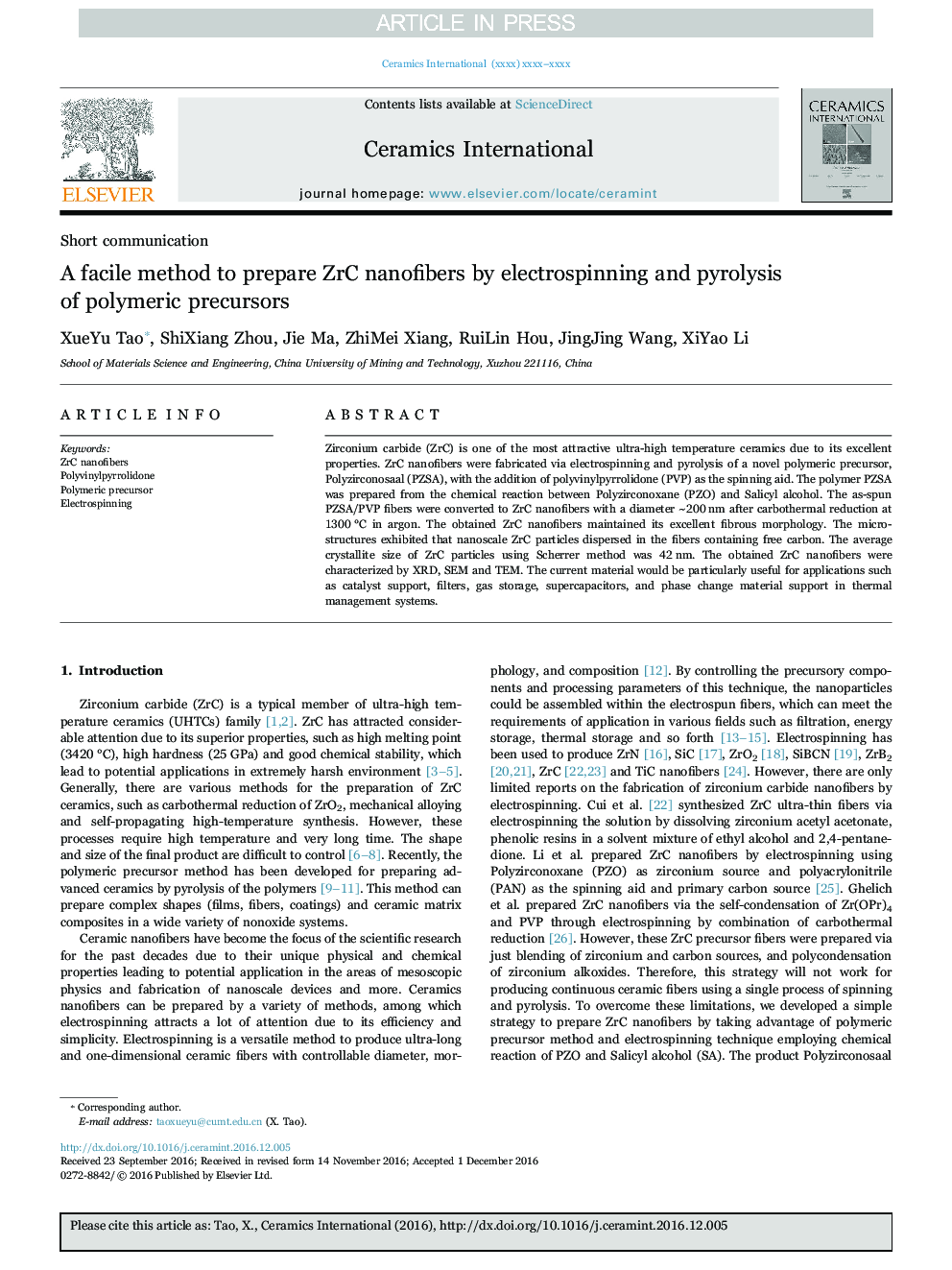| Article ID | Journal | Published Year | Pages | File Type |
|---|---|---|---|---|
| 5438952 | Ceramics International | 2017 | 5 Pages |
Abstract
Zirconium carbide (ZrC) is one of the most attractive ultra-high temperature ceramics due to its excellent properties. ZrC nanofibers were fabricated via electrospinning and pyrolysis of a novel polymeric precursor, Polyzirconosaal (PZSA), with the addition of polyvinylpyrrolidone (PVP) as the spinning aid. The polymer PZSA was prepared from the chemical reaction between Polyzirconoxane (PZO) and Salicyl alcohol. The as-spun PZSA/PVP fibers were converted to ZrC nanofibers with a diameter ~200 nm after carbothermal reduction at 1300 °C in argon. The obtained ZrC nanofibers maintained its excellent fibrous morphology. The microstructures exhibited that nanoscale ZrC particles dispersed in the fibers containing free carbon. The average crystallite size of ZrC particles using Scherrer method was 42 nm. The obtained ZrC nanofibers were characterized by XRD, SEM and TEM. The current material would be particularly useful for applications such as catalyst support, filters, gas storage, supercapacitors, and phase change material support in thermal management systems.
Related Topics
Physical Sciences and Engineering
Materials Science
Ceramics and Composites
Authors
XueYu Tao, ShiXiang Zhou, Jie Ma, ZhiMei Xiang, RuiLin Hou, JingJing Wang, XiYao Li,
